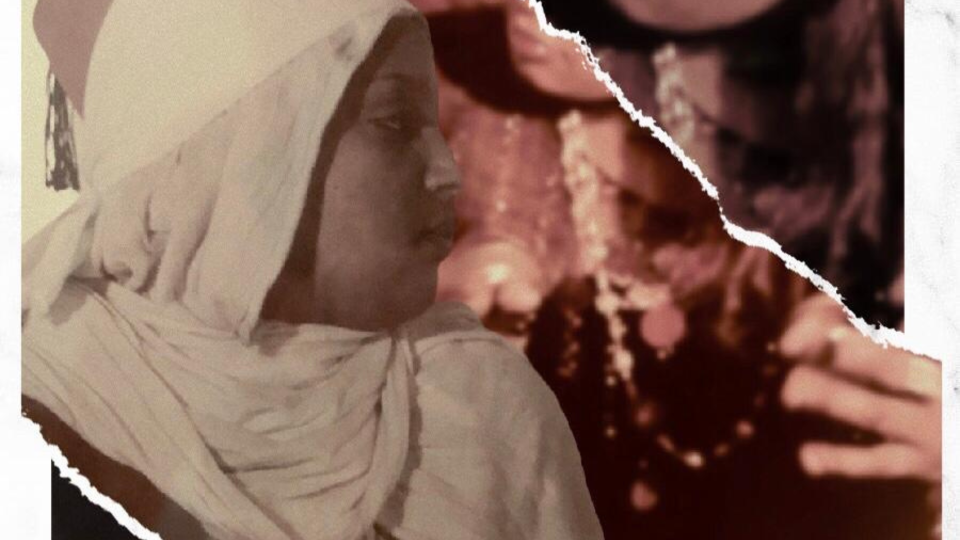
Illustration by Dahlia Mahmoud for GenderIT
The dynamics of gender politics on a regional level has shifted the perception of Muslim women locally and globally. With key events shifting how the majority of women access basic human rights in the MENASA region, women of the Horn in specific have had to battle identity and belonging as well. Since this video’s inception two decades ago c2002, the platforms on which women have had the safety and freedom to express themselves have undoubtedly increased, so much more remains to unfold. The core issues discussed are still making headlines to this very day on major news outlets all over the world. Dress-code, civil rights, education, equal pay and respect. In a world steadily confusing tradition with religion, where women continue to carry the burden of biased laws subjected to their everyday lives, the very content of the video remains contextual still.
This award-winning self-produced video spotlights a young woman posing as two seemingly extreme opposite roles of women in Islam. In it, she expresses the different views regarding both the perceptions as well as the misperceptions of being female in Muslim societies. Her rap, as she appears beside herself in a split screen, highlights certain similarities and differences in the attitudes of how society perceives and deals with the two characters on the screen and what each represents in society. The witty nature of the bold banter between the characters leaves the viewer with personal yet relatable insights on what it’s like to be a strong Muslim woman in today’s world. Ideally the viewing space would be an intimate room with the screen projected large enough to allow the space for life size viewing of the characters. Although there is no physical interactivity with the video piece, the psychological effect of standing in front of a mirror image with such polar and variant views allows for a deeper impact and space for conversation post interacting with the piece.
The artist intends to instigate conversations that would lead to empathy and understanding between people who may not normally have common grounds to discuss. At core, as humans, we all have an innate need to be acknowledged for our humanity, and respected and not rejected for upholding our different characteristics and traits. This is especially important with the blended Afro-Arab cultures that women of the horn undoubtedly navigate often seamlessly on a daily basis. Although the African Identity and sense of belonging does not forbear any other cultural influence, the need to overtly activate the allegiance to Arab and Islamic traditions has often burgeoned in villages and on the outskirts of the cities. Where sermons and cultural leaders have defined that relationship for all the constituents to bear witness to the sweeping reality of both traditions. The state of affairs from Iran through Somalia, Sudan and to Afghanistan leaves most bereft and barely able to make sense of the logic or lack thereof when it comes to the Muslim women. The innate ability of the youth to express and communicate beyond borders and cultural boundaries, renders the gender conversation alive and very much active still. Artivism in Museums and on the web, in short clips or seasoned interviews, academic articles or poignant op-eds, the power to communicate will definitely continue to raise the right concerns and ask the questions needed to be asked. It is 2022, how much longer? For what reasons? Why women, and why so violently obsessed with these bodies still? Which state will lead with education and equal pay, and how do we ensure equity? And whom are these dues paid to and till when? Questions. Questions. Questions.
- 711 views






Add new comment